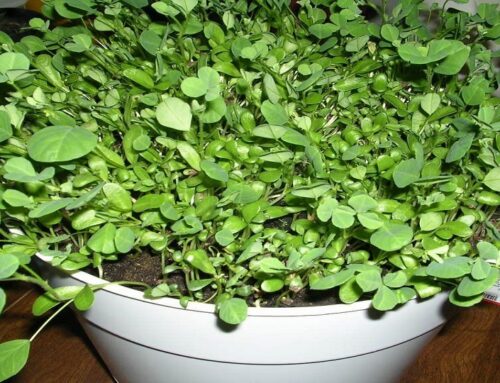Cool, temperate climate is most favourable for growing kale. It is a frost-hardy plant and can withstand even very low temperatures up to –15°C. Kale plants thrive well in a well-drained, sandy loam soil which is high in organic matter with a neutral pH of 7. Propagation of kale is mainly through seeds.
First step is to choose the variety. Kale plants are available in two colours: purple and green. Among these, there are curly-leaf and plain leaf varieties of kale plants.
Sowing a handful of seeds is enough to raise sufficient number of seedlings for a small kitchen garden. Seeds are generally sown in well-prepared nursery beds.
Direct broadcasting of seeds in the main fields is also practiced occasionally. 200-250 grams of seed is the recommended seed rate for one acre area. In tropics, August– October is the sowing time in plains while August–September is the ideal sowing time for hilly areas. Seeds germinate within 7-10days. 5-6 weeks old seedlings are transplanted in the main field. Recommended spacing in the main field is 45cm × 30cm.
A basal dose of 20 tons of farmyard manure (FYM) or compost (per one acre land) may be incorporated into the top soil to replenish the soil fertility at the time of land preparation. Four balanced plant nutrition, application of a complete fertiliser is recommended. A complete fertiliser contains all three essential plant nutrients such as nitrogen (N), phosphorus (P), and potassium (K). Standard fertiliser dose for growing plants in tropical and subtropical regions is approximately 75-80kg N+35-40kg P+ 35-40kg K/acre of land. Regarding method of fertilizer application, 1/3 rd of Nitrogen is applied at planting time, another 1/3 rd of Nitrogen is applied 30–40 days after planting, and remaining 1/3 rd of Nitrogen is given 15–20 days prior to first harvesting. Full doses of P and K are applied at the planting time itself.
Even though Kale is a drought resistant crop, irrigation should be scheduled in advance. Like other Brassica vegetables, regular irrigations are necessary and irrigations should be done according to the plant requirements. Normally, first irrigation is done immediately after sowing/transplanting and subsequent irrigations are done at 15–20 days interval.
Regular hoeing and weeding is recommended until plants grow well and leaves cover the soil surface. In total, 2–3 hoeing and weeding are recommended. Plants grow quickly and within 2-3 months after transplanting, leaves become ready for harvest. Harvesting period in tropics is from November to January, since it is grown as a winter vegetable. Correct harvesting maturity is when the plant has completed its vegetative growth phase. During harvest process, the whole rosette of the plant is harvested by using a sharp knife. Average yield obtained from a kale crop is about 10,000-15,000 kg/acre.
For seed production purposes, the crop is grown as a biennial plant. Soon after completing its vegetative phase of growth, the plant begins its reproductive cycle by producing flower stalks and later seeds.
Post Harvest Aspects: Precooling of freshly harvested leaves is necessary to remove field heat from them. Precooling is done at or above 0 °C (32 °F) immediately after harvest. Kale is available in the market throughout the year. As of now, there are no market grades or sizes for kale leaves. Regarding packaging, uniform sized bunches of kale leaves are tied together with rubber bands or thick jute threads or similar materials, and then packaged in plastic bags or clamshell containers before placing them in standard-sized corrugated cartons. Perforated polyethylene liners should be used in the cartons. Kale leaves are highly perishable at room temperature. However, they may be stored for 2 to 3 weeks at 0°C (32 °F) with 95 to 100% Relative Humidity conditions. For retail outlets, water sprinklers may be used for misting the freshly arrived kale leaves so that they maintain the fresh appearance for a long time. Kale leaves are not chilling sensitive.
Marketing: For export markets, the mode of transport is mainly by air. For export by air, product is transported the day after harvest. Kale leaves have a well-established global market in Asia, Mexico, and Central America. For local markets, fresh products can be transported immediately after harvest. However, study the local market preferences before marketing your product for local or domestic markets.
We have a book on ‘Growing Kale Leaves‘….
Check out our publishing services here…
We publish top quality videos on various ‘Food & Agriculture’ topics. You may subscribe our video channel here…






